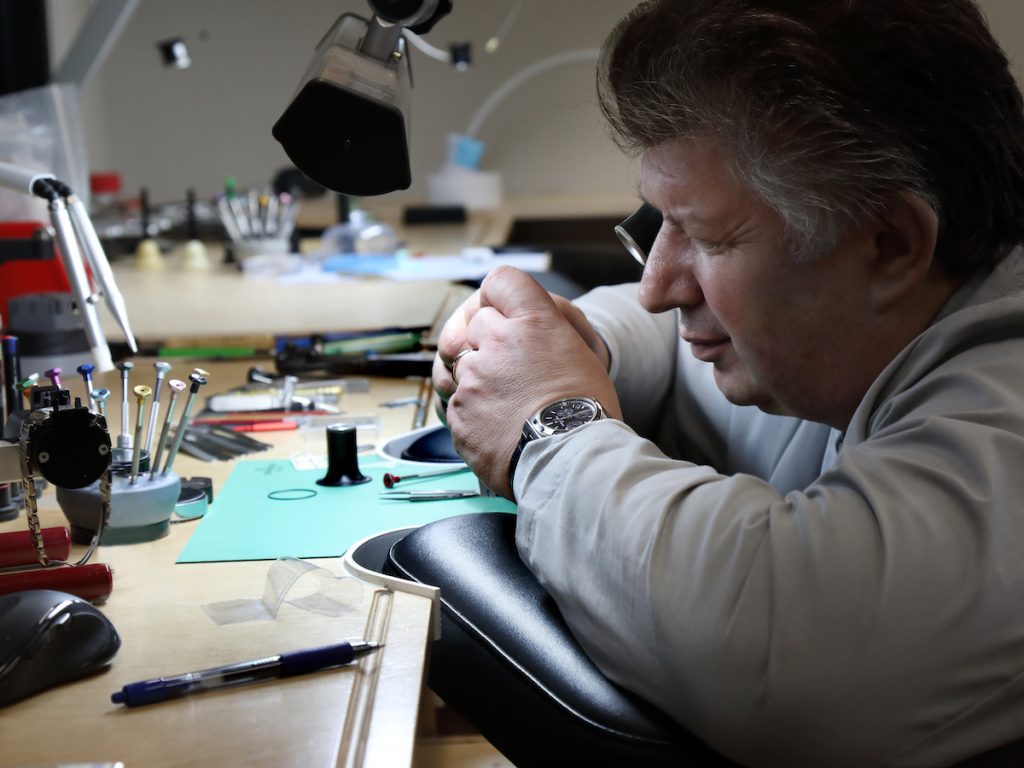Research Reveals: UV Light Causes Lubricant Polymerization
In 2025, the luxury watch industry faced a surprising turning point as a series of new scientific studies revealed an unexpected threat to the delicate mechanics that power high-end timepieces. At the center of this discovery was ultraviolet (UV) light cleaning, a method that had gained popularity for its perceived ability to sterilize and remove grime from watch components quickly and without harsh chemicals. However, extensive research uncovered that exposure to UV light triggers a chemical reaction in the synthetic lubricants inside watches—causing them to polymerize, or form hardened aggregates that impair the watch’s performance.
Watch lubricants are carefully engineered mixtures designed to reduce friction and wear between the moving parts of a watch’s intricate movement. Unlike traditional oils, modern lubricants are often synthetic compounds optimized for temperature stability and longevity. The research, conducted by independent laboratories working with several watch manufacturers, demonstrated that UV light alters the molecular structure of these lubricants. Specifically, photons from UV exposure energize the lubricant molecules, encouraging them to bond abnormally and form microscopic clumps.
This polymerization effect has a cascading impact: clumped lubricants lose their fluidity, causing increased friction, irregular timekeeping, and in severe cases, irreversible damage to gears and pivots. Watches subjected to repeated UV cleaning showed accelerated aging signs compared to those maintained with conventional methods. The studies raised alarms throughout the horological community, especially because UV cleaning devices had been marketed as cutting-edge tools promising gentle and efficient maintenance.
This revelation marked a shift in how watchmakers and collectors alike view UV light’s role in preservation. What was once considered a futuristic cleaning aid became identified as a hidden culprit capable of undermining decades of craftsmanship in minutes.
Brand Announcements: Richemont Group’s New Regulations Explained
In response to these scientific findings, major players in the luxury watch industry swiftly moved to implement new policies. The Richemont Group, which owns some of the most prestigious watch brands including Cartier, IWC, Jaeger-LeCoultre, and Panerai, issued a landmark directive in early 2025 banning the use of UV light cleaning for all watches under their care.
The official Richemont statement emphasized a commitment to preserving the longevity and performance of their timepieces, stating that “emerging evidence shows that UV light exposure induces detrimental changes in lubricant composition, compromising the integrity of mechanical movements.” The group mandated all authorized service centers to immediately cease UV cleaning practices and to inform customers of the risks involved.
Beyond Richemont, other luxury conglomerates like LVMH and Swatch Group followed suit, issuing similar bans and revising maintenance protocols. These regulatory changes have had ripple effects throughout the independent watchmaking world, with smaller ateliers adopting equivalent standards to reassure collectors.
This collective movement reflects a broader shift toward scientific rigor and conservatism in watch servicing. Brands are investing heavily in research and education to refine cleaning techniques, balancing innovation with respect for the fragile chemistry of mechanical watches.
The ban also extends to at-home UV cleaning devices marketed to consumers, many of which had proliferated through online marketplaces with little oversight. Brands now caution enthusiasts against using these gadgets, underscoring the importance of professional maintenance.

Alternative Solutions: Five Safe Cleaning Tools for Watch Care
With UV light cleaning off the table, watchmakers and enthusiasts have turned their attention to safer, proven alternatives to maintain pristine watches without risking damage to lubrication or components. Below are five of the most effective and widely recommended cleaning tools for 2025:
- Ultrasonic Cleaners with Regulated Cycles
Ultrasonic cleaning remains a popular method for removing dirt and oils from watch parts but has been refined to avoid heat buildup and lubricant degradation. Modern machines offer controlled temperature and cycle durations, ensuring delicate components are cleaned thoroughly without compromising oils or finishes. Ultrasonic cleaning is typically used on disassembled movements during professional servicing. - Microfiber Polishing Cloths
For everyday maintenance, soft microfiber cloths infused with specialized cleaning compounds offer a gentle way to wipe cases, crystals, and bracelets. These cloths remove fingerprints, dust, and light grime without abrasion or chemical residue, making them ideal for quick touch-ups. - Steam Cleaning
Some service centers now employ low-temperature steam cleaning technology that uses pressurized steam to dissolve dirt and oils. This method sanitizes surfaces effectively without UV exposure and is suitable for watch exteriors. Steam is carefully controlled to avoid moisture ingress. - Gentle Solvent Baths
In professional watchmaking, mild solvent baths using proprietary solutions have proven effective at breaking down contaminants on metal parts without attacking lubricants. These baths are typically combined with manual brushing under magnification, allowing watchmakers to clean without risking polymerization. - Compressed Air Dusting
Compressed air systems, often paired with fine brushes, help remove dust and lint from hard-to-reach crevices. This non-contact method is valuable for preserving lubricants and delicate finishes, especially in between service intervals.
Together, these tools enable a balanced approach to watch care—prioritizing preservation, mechanical integrity, and aesthetics. Watchmakers emphasize that cleaning should always be performed with an understanding of the watch’s design and lubricant chemistry, reinforcing the value of professional servicing over DIY methods.
Conclusion
The ban on UV light cleaning in 2025 marks a significant evolution in the art and science of horological maintenance. What was once hailed as an innovative, quick-cleaning method has been revealed to undermine the very lubricants that ensure smooth mechanical operation. In response, industry leaders like the Richemont Group have moved decisively to protect their watches’ legacy and performance through new regulations and education.
For collectors and watch enthusiasts, the takeaway is clear: preserving the intricate balance inside a mechanical watch demands respect for its materials and chemistry. While UV light cleaning is out, a variety of alternative tools and techniques are available that safely maintain watches’ beauty and precision. As research deepens and technology advances, watchmakers will continue to refine care protocols—always with an eye toward safeguarding the timeless craftsmanship treasured by generations.





































